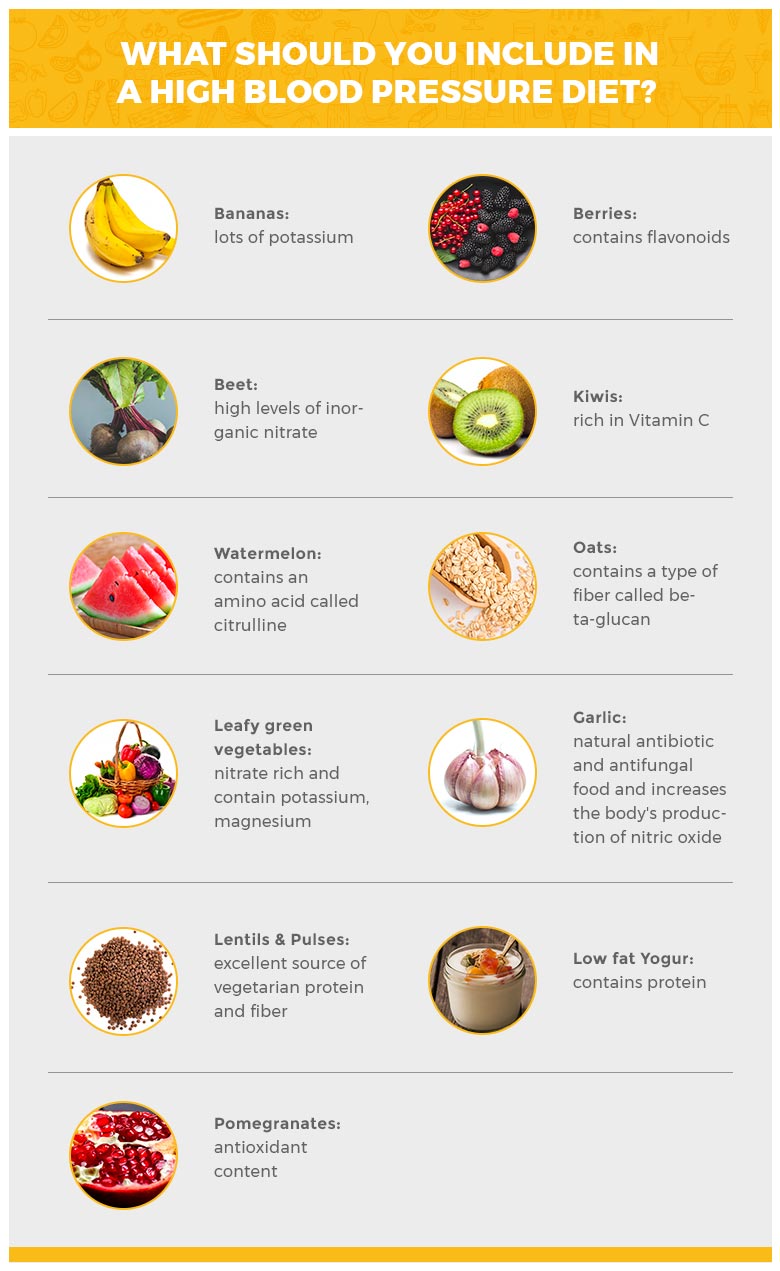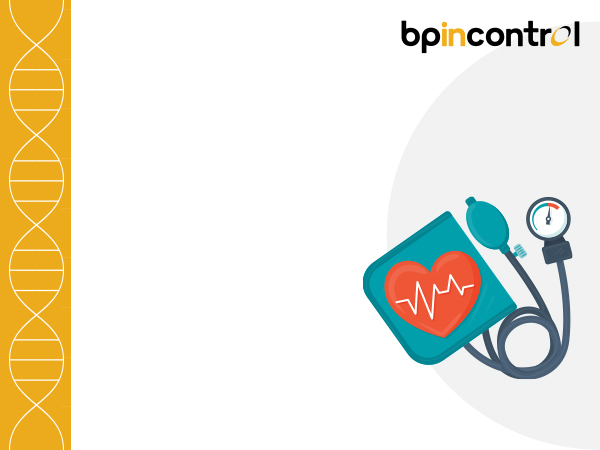
Keeping Your BP in Check

Table of Contents
Blood pressure depends on how much blood the heart needs to pump and how much resistance there is to that blood flow in the arteries. Simply put, the narrower the arteries, the higher the blood pressure.Blood pressure is measured in millimeters of mercury (mm Hg) and displays two numbers the upper systolic blood pressure (the pressure in the blood vessels when the heart beats) and the lower diastolic blood pressure (the pressure in the blood vessels between beats, when the heart is resting).
Blood pressure levels lower than 120/80 (mm Hg) are considered normal but blood pressure readings that are 130/80 mm Hg or more are categorised as high blood pressure or hypertension. If the blood pressure levels are above normal but under 130/80 mm Hg, then that person will fall into the category of elevated blood pressure, meaning that although they do not have high BP they are at risk of developing high blood pressure.
How To Control High Blood Pressure?
Elevated blood pressure can be kept in check by making certain lifestyle changes and may not require medications. Here are some effective ways on how to reduce blood pressure.
- Workout Regularly –
Physical activity, in particular aerobic activity such as running, jogging, brisk walking, swimming, cycling increase the heart and breathing rates. So, with time the heart gets stronger and pumps with less effort. This puts less pressure on the arteries and helps lower blood pressure. It is recommended by experts that moderate-to vigorous-intensity physical activity for 40 minutes, three to four times per week, is a good regular workout schedule to maintain a healthy body.
- Keep Your Weight In Check –
Excess weight is one of the biggest risks that can cause high blood pressure. So it is important to watch the numbers on the measuring scale carefully. For people who already have high BP, losing even a few kilos can help reduce blood pressure. Studies suggest that weight-loss diets reduced blood pressure by an average of 3.2 mm Hg diastolic and 4.5 mm Hg systolic.
- Cut Down On Sugar & Carbs –
Restricting consumption of sugar and carbohydrates can help lose weight and lower blood pressure. Some studies have reported that low-carb diets lowered blood pressure by 4.5 mm Hg diastolic and 5.9 mm Hg systolic. Another benefit of cutting down on carbs and sugar is that your protein intake goes up which is beneficial to control blood pressure levels.
- Consume More Potassium & Less Sodium –
Potassium is one of the most vital minerals that the body needs as it lessens the effect of salt in the body and also relaxes the blood vessels. Sodium is also an important mineral for the body as it helps to maintain the balance of water in and around the blood cells. But its intake has to be limited as extra sodium creates more fluid in the body which means more pressure on the blood vessels and kidneys. Leafy green vegetables such as spinach, kale, lettuce, broccoli, cauliflower, turnip greens, bananas, pumpkin or sunflower seeds are all good sources of potassium. A normal person should consume 3500 – 5000 mg of potassium per day.
- Include Foods With Omega 3, Magnesium, Calcium –
Omega-3 fatty acids lower blood pressure & triglycerides and also help reduce inflammation. Fish such as salmon, mackerel, herring and tuna as well as flaxseeds, cod liver and canola oils, and walnuts are important sources of Omega 3. Magnesium is a natural mineral that aids in regulating healthy cell function and muscle fiber contractions. Spinach, high-fiber cereal, lentils, whole-grain bread, almonds, cashews, mixed nuts, pumpkin or sunflower seeds, soybeans, legumes, halibut, and oatmeal are all good sources of magnesium.
Along with potassium and magnesium, calcium is the key mineral to prevent hypertension and lower blood pressure as it assists blood vessel constriction and dilation. Some rich sources of calcium include sardines (with bones), fat-free milk and dairy products such as yogurt, calcium-enriched orange juice, cabbage, broccoli, guavas, grapefruit, etc. - Eat Garlic –
Garlic is high in nitrate content which helps widens the blood vessels and therefore reduces blood pressure. A study of people with high blood pressure found a diastolic reduction of 6 mm Hg and a systolic reduction of 12 mm Hg in those who consumed garlic. In addition to garlic, beet and pomegranates also have good amounts of nitric dioxide.
- Have A Protein-Rich Diet –
Experts say that eating a protein-rich diet lowers the risk of high blood pressure. Fish such as salmon, tuna, eggs, chicken breast, beef, beans & legumes, kidney beans, lentils, nuts, peanut butter, cheese, chickpeas are all good sources of protein.
- Avoid Packaged Food –
Processed & packaged food have more salt content in them for preservation and processing. Many foods that are labeled ‘low fat’ generally have more salt & sugar in them to compensate for the loss of fat. Cutting down, or even avoiding completely, processed food will help you eat less salt, less sugar, and fewer refined carbohydrates. All of this can result in lower blood pressure.
- No Smoking & Moderate Drinking –
The ill-effects of smoking are well known. Every cigarette smoked temporarily increases the blood pressure levels and the heart rate. The chemicals in tobacco can increase blood pressure by damaging blood vessel walls, causing inflammation, and narrowing the arteries. The hardened arteries cause higher blood pressure. Even passive smoking is bad for high blood pressure. Same with alcohol consumption; moderate alcohol intake, one drink for women and two for men may help lower blood pressure, but excessive drinking can raise blood pressure, reduce the effectiveness of blood pressure medications and also cause weight gain.
- Have Some Dark Chocolate –
Studies show that eating 100 gms of dark chocolate (has a lot less sugar in it than regular chocolate) per day can improve cardio vascular health. Dark chocolates are high in flavonoids, particularly a subtype called flavanols that causes dilation of the blood vessels and may help lower blood pressure.
- Sleep Well –
Blood pressure dips when we are asleep. People with insomnia, irregular sleeping patterns are more at risk of high blood pressure. It is necessary to get at least 7 hours of uninterrupted sleep to avoid the risk of hypertension. For a peaceful night’s sleep set a regular sleep schedule, spend time relaxing at night, exercise during the day and avoid daytime naps.
- Meditate Or Do Yoga To Keep Stress Away –
Chronic stress can have a negative effect on blood pressure and can increase the risk of developing hypertension. Meditation techniques have long been used to calm the mind and reduce stress. Yoga, which has been practiced for centuries for breath control, posture and meditation methods is also effective in reducing stress and blood pressure. A review on yoga and blood pressure found an average blood pressure decrease of 3.62 mm Hg diastolic and 4.17 mm Hg systolic when practiced with breath control, postures, and meditation. After implementing these lifestyle changes, if your blood pressure is still high then consult your doctor. In addition to these changes the doctor may recommend some prescription medications.
Note of caution: This article is for information purposes only. Always consult your doctor in case of any blood pressure or other health-related problems.

 Physical activity, in particular aerobic activity such as running, jogging, brisk walking, swimming, cycling increase the heart and breathing rates. So, with time the heart gets stronger and pumps with less effort. This puts less pressure on the arteries and helps lower blood pressure. It is recommended by experts that moderate-to vigorous-intensity physical activity for 40 minutes, three to four times per week, is a good regular workout schedule to maintain a healthy body.
Physical activity, in particular aerobic activity such as running, jogging, brisk walking, swimming, cycling increase the heart and breathing rates. So, with time the heart gets stronger and pumps with less effort. This puts less pressure on the arteries and helps lower blood pressure. It is recommended by experts that moderate-to vigorous-intensity physical activity for 40 minutes, three to four times per week, is a good regular workout schedule to maintain a healthy body. Excess weight is one of the biggest risks that can cause high blood pressure. So it is important to watch the numbers on the measuring scale carefully. For people who already have high BP, losing even a few kilos can help reduce blood pressure. Studies suggest that weight-loss diets reduced blood pressure by an average of 3.2 mm Hg diastolic and 4.5 mm Hg systolic.
Excess weight is one of the biggest risks that can cause high blood pressure. So it is important to watch the numbers on the measuring scale carefully. For people who already have high BP, losing even a few kilos can help reduce blood pressure. Studies suggest that weight-loss diets reduced blood pressure by an average of 3.2 mm Hg diastolic and 4.5 mm Hg systolic. Restricting consumption of sugar and carbohydrates can help lose weight and lower blood pressure. Some studies have reported that low-carb diets lowered blood pressure by 4.5 mm Hg diastolic and 5.9 mm Hg systolic. Another benefit of cutting down on carbs and sugar is that your protein intake goes up which is beneficial to control blood pressure levels.
Restricting consumption of sugar and carbohydrates can help lose weight and lower blood pressure. Some studies have reported that low-carb diets lowered blood pressure by 4.5 mm Hg diastolic and 5.9 mm Hg systolic. Another benefit of cutting down on carbs and sugar is that your protein intake goes up which is beneficial to control blood pressure levels. Potassium is one of the most vital minerals that the body needs as it lessens the effect of salt in the body and also relaxes the blood vessels. Sodium is also an important mineral for the body as it helps to maintain the balance of water in and around the blood cells. But its intake has to be limited as extra sodium creates more fluid in the body which means more pressure on the blood vessels and kidneys. Leafy green vegetables such as spinach, kale, lettuce, broccoli, cauliflower, turnip greens, bananas, pumpkin or sunflower seeds are all good sources of potassium. A normal person should consume 3500 – 5000 mg of potassium per day.
Potassium is one of the most vital minerals that the body needs as it lessens the effect of salt in the body and also relaxes the blood vessels. Sodium is also an important mineral for the body as it helps to maintain the balance of water in and around the blood cells. But its intake has to be limited as extra sodium creates more fluid in the body which means more pressure on the blood vessels and kidneys. Leafy green vegetables such as spinach, kale, lettuce, broccoli, cauliflower, turnip greens, bananas, pumpkin or sunflower seeds are all good sources of potassium. A normal person should consume 3500 – 5000 mg of potassium per day. Omega-3 fatty acids lower blood pressure & triglycerides and also help reduce inflammation. Fish such as salmon, mackerel, herring and tuna as well as flaxseeds, cod liver and canola oils, and walnuts are important sources of Omega 3. Magnesium is a natural mineral that aids in regulating healthy cell function and muscle fiber contractions. Spinach, high-fiber cereal, lentils, whole-grain bread, almonds, cashews, mixed nuts, pumpkin or sunflower seeds, soybeans, legumes, halibut, and oatmeal are all good sources of magnesium.
Omega-3 fatty acids lower blood pressure & triglycerides and also help reduce inflammation. Fish such as salmon, mackerel, herring and tuna as well as flaxseeds, cod liver and canola oils, and walnuts are important sources of Omega 3. Magnesium is a natural mineral that aids in regulating healthy cell function and muscle fiber contractions. Spinach, high-fiber cereal, lentils, whole-grain bread, almonds, cashews, mixed nuts, pumpkin or sunflower seeds, soybeans, legumes, halibut, and oatmeal are all good sources of magnesium. Garlic is high in nitrate content which helps widens the blood vessels and therefore reduces blood pressure. A study of people with high blood pressure found a diastolic reduction of 6 mm Hg and a systolic reduction of 12 mm Hg in those who consumed garlic. In addition to garlic, beet and pomegranates also have good amounts of nitric dioxide.
Garlic is high in nitrate content which helps widens the blood vessels and therefore reduces blood pressure. A study of people with high blood pressure found a diastolic reduction of 6 mm Hg and a systolic reduction of 12 mm Hg in those who consumed garlic. In addition to garlic, beet and pomegranates also have good amounts of nitric dioxide. Experts say that eating a protein-rich diet lowers the risk of high blood pressure. Fish such as salmon, tuna, eggs, chicken breast, beef, beans & legumes, kidney beans, lentils, nuts, peanut butter, cheese, chickpeas are all good sources of protein.
Experts say that eating a protein-rich diet lowers the risk of high blood pressure. Fish such as salmon, tuna, eggs, chicken breast, beef, beans & legumes, kidney beans, lentils, nuts, peanut butter, cheese, chickpeas are all good sources of protein. Processed & packaged food have more salt content in them for preservation and processing. Many foods that are labeled ‘low fat’ generally have more salt & sugar in them to compensate for the loss of fat. Cutting down, or even avoiding completely, processed food will help you eat less salt, less sugar, and fewer refined carbohydrates. All of this can result in lower blood pressure.
Processed & packaged food have more salt content in them for preservation and processing. Many foods that are labeled ‘low fat’ generally have more salt & sugar in them to compensate for the loss of fat. Cutting down, or even avoiding completely, processed food will help you eat less salt, less sugar, and fewer refined carbohydrates. All of this can result in lower blood pressure. The ill-effects of smoking are well known. Every cigarette smoked temporarily increases the blood pressure levels and the heart rate. The chemicals in tobacco can increase blood pressure by damaging blood vessel walls, causing inflammation, and narrowing the arteries. The hardened arteries
The ill-effects of smoking are well known. Every cigarette smoked temporarily increases the blood pressure levels and the heart rate. The chemicals in tobacco can increase blood pressure by damaging blood vessel walls, causing inflammation, and narrowing the arteries. The hardened arteries  Studies show that eating 100 gms of dark chocolate (has a lot less sugar in it than regular chocolate) per day can improve cardio vascular health. Dark chocolates are high in flavonoids, particularly a subtype called flavanols that causes dilation of the blood vessels and may help lower blood pressure.
Studies show that eating 100 gms of dark chocolate (has a lot less sugar in it than regular chocolate) per day can improve cardio vascular health. Dark chocolates are high in flavonoids, particularly a subtype called flavanols that causes dilation of the blood vessels and may help lower blood pressure. Blood pressure dips when we are asleep. People with insomnia, irregular sleeping patterns are more at
Blood pressure dips when we are asleep. People with insomnia, irregular sleeping patterns are more at  Chronic stress can have a negative effect on blood pressure and can increase the risk of developing hypertension. Meditation techniques have long been used to calm the mind and reduce stress. Yoga, which has been practiced for centuries for breath control, posture and meditation methods is also effective in reducing
Chronic stress can have a negative effect on blood pressure and can increase the risk of developing hypertension. Meditation techniques have long been used to calm the mind and reduce stress. Yoga, which has been practiced for centuries for breath control, posture and meditation methods is also effective in reducing 

Comments (1)
ROMEL
Well advice points,thanks for the knowledge.
Add your comment